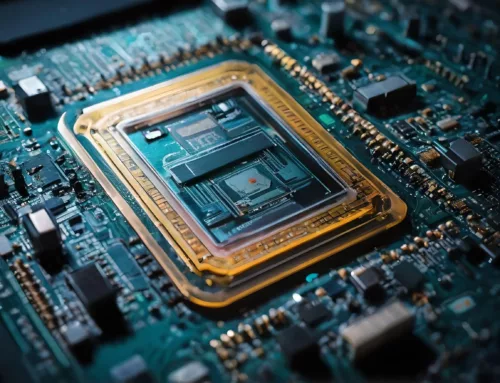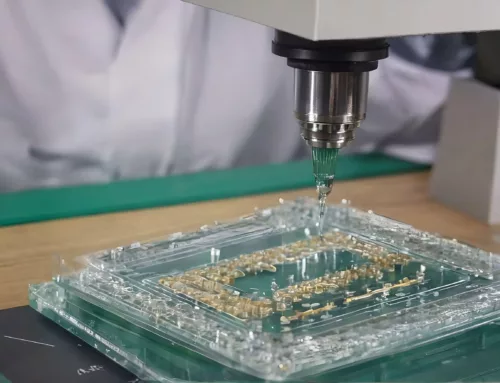
Particle engineering is an emerging field that is affecting multiple industries, with its most significant impact felt in pharmaceuticals, food, and cosmetics. The roots of particle engineering extend deep into human history, with examples found in the craftsmanship of ancient artisans who manipulated particles at the macro scale to create pottery and ceramics, totally unaware of the micro and nano scales’ existence. In modern science, the term “particle engineering” gained prominence in the mid-20th century, marking a significant step in understanding and applying particle properties and the different scales.
Particle Engineering Techniques
Particle engineering, at its core, is a discipline deeply rooted in the precise manipulation of particles to achieve the desired physical properties, a feat made possible through the meticulous control and manipulation of chemical reactions. The foundation of this field lies in particle science and the deep understanding of particle characteristics, where scientists exercise intricate control over particle size, shape, and morphology. One of the primary techniques utilized in particle engineering is crystallization, a process where substances are dissolved in a solvent, and the subsequent crystallization is carefully controlled through chemical reactions, temperature adjustments, and pressure changes. The outcome is crystals with tailored characteristics, particularly essential in the pharmaceutical industry where poorly soluble drugs can be transformed into more soluble and effective forms. Another critical technique is precipitation, a method where chemical reactions are employed to form solid particles from liquid solutions.
By manipulating reaction conditions, including reagents, time, pressure, pH, temperature, concentration, and others, particles are induced to precipitate, allowing control over particle size and other properties. This technique finds extensive use in the food industry for designing emulsions and suspensions with precisely controlled particle sizes that dictate the texture, flavor, dissolution, and stability of food products. Here, surface modification reactions play an important role, in altering the chemical properties of particle surfaces. In cosmetics, for instance, surface modification of nanoparticles is common to improve dispersion, adhesion, and sensory characteristics. Co-precipitation, involving the simultaneous precipitation of multiple compounds through chemical reactions, allows for the creation of particles with tailored compositions, crucial in pharmaceutical formulations for enhanced drug stability, solubility, and targeted delivery. Crosslinking reactions are utilized to form covalent bonds between particles, influencing their structural characteristics, particularly relevant in the food industry for modifying textures and product stability.
Particle engineering, therefore, is a science that thrives at the intersection of chemistry and materials, where these chemical reactions are the designers’ tools, allowing for the creation of particles fine-tuned for specific industrial applications.
Pharmaceutical Industry
Particle engineering has reshaped the landscape of drug development in the pharmaceutical industry.
The size, shape, and morphology of drug particles have a profound impact on drug formulation and bioavailability. Poorly water-soluble drugs, which were once a challenge to formulate, can now be transformed into nanoparticles.
These nanoparticles have significantly enhanced the drug’s dissolution rate and absorption within the body, resulting in more effective treatments.
A prime example is Paclitaxel, a cancer drug made more potent through nanoparticle engineering, offering possible hope to countless patients.
Food Industry
Particle engineering has also played a pivotal role and continues to do so in the food industry, enhancing the daily sensory experiences of consumers. It contributes to the texture, flavor, and stability of various food products. Manufacturers utilize particle engineering to achieve specific sensory qualities in their products.
For instance, ice cream manufacturers use particle engineering to control the creaminess and texture of their products, ensuring a delightful experience for consumers. Additionally, the manipulation of particle sizes and distributions of ingredients such as sugar, oil, and salt is a common practice in the industry.
This precise particle engineering enhances flavor release, mouthfeel, and shelf stability while also improving visual appeal. Virtually every food manufacturer employs particle engineering to benefit and enhance their products and, as a result, boost their sales.
Cosmetics Industry
In the cosmetics industry, particle engineering is indispensable to achieve aesthetics, stability, and product effectiveness. Engineered particles are crucial in ensuring cosmetic products meet these criteria. Sunscreen, for example, relies on zinc oxide or titanium dioxide nanoparticles for effective UV protection without leaving a white residue on the skin. This engineering significantly improves the aesthetics and performance of the product, making it more appealing to consumers. Beyond sunscreens, particle engineering plays a pivotal role in cosmetics, including the use of microspheres to create a smooth and even skin texture, and the controlled dispersion of pigments for vibrant and long-lasting makeup.
Additionally, it enhances the stability and shelf life of cosmetic formulations, ensuring that the products maintain their quality and efficacy over time. Particle engineering in cosmetics is essential for achieving the desired sensory experience and product appeal, to boost and maintain sales and profit.
Challenges
While particle engineering holds immense potential, it comes with significant challenges that require careful attention for its continued success. A primary hurdle is the necessity to scale up manufacturing processes to meet the diverse needs of industries while maintaining consistent quality. Even minor adjustments in production can have a profound impact on particle properties. Researchers are actively exploring innovative methods and technologies to overcome these challenges, including the adoption of continuous manufacturing and in-line monitoring and control, which ensure the desired quality standards as production scales up.
Another challenge in particle engineering is cost considerations. Some advanced techniques in this field can be expensive to implement and operate. However, with the increasing demand for engineered particles, it is anticipated that the costs of these technologies will become more affordable, potentially leading to wider
adoption across various industries. Resource availability, geopolitics, and logistics pose other significant challenges. The availability of raw materials and resources required for particle engineering can be influenced by geopolitical factors, logistic constraints, and the actual availability of the resource as demand increases. Dependence on specific regions for essential resources can lead to supply chain vulnerabilities and disruptions, which must be carefully controlled and managed.
Future perspectives
Despite these obstacles, the future of particle engineering holds significant promise, mainly due to the integration of better technologies. Artificial intelligence (AI) and machine learning (ML) are already playing a crucial role in developing new particle engineering techniques and improving the efficiency of existing processes. AI and ML can assist in designing new particle shapes and structures, optimizing manufacturing procedures, and predicting the properties of engineered particles, offering exceptional precision and control in the field.
Several upcoming trends are reshaping the future of particle engineering. Firstly, the development of new materials with unique properties is a key
factor that promises to enable the creation of engineered particles with highly customizable performance characteristics.
Additionally, the utilization of additive manufacturing techniques, such as 3D printing, to design particles with intricate and complex shapes and structures is opening innovative possibilities for tailored particle designs.
Due to technological advancements, the field is experiencing a surge in the development of advanced particle characterization techniques, providing a deeper understanding of the properties of engineered particles and their direct correlation with performance. This growing knowledge base will ensure more precise control and optimization of particle properties, marking an exciting direction in the field of particle engineering.
These ongoing trends are expected to drive the creation of inventive applications for engineered particles across various industries, spanning pharmaceuticals, energy, food, and materials science. The future of particle engineering is poised for continuous innovation, where advancements in technology and materials will redefine its role and impact on our ever-evolving world.




